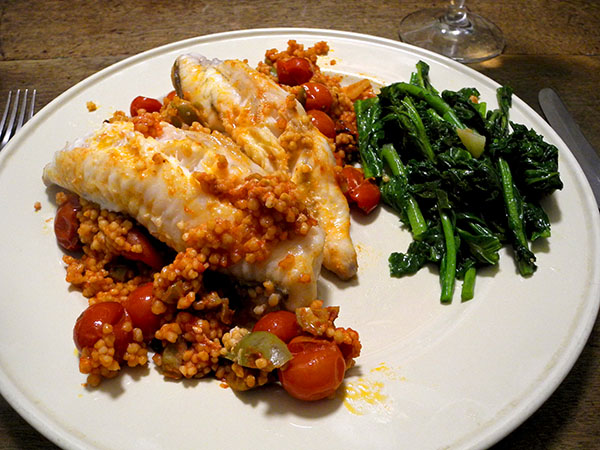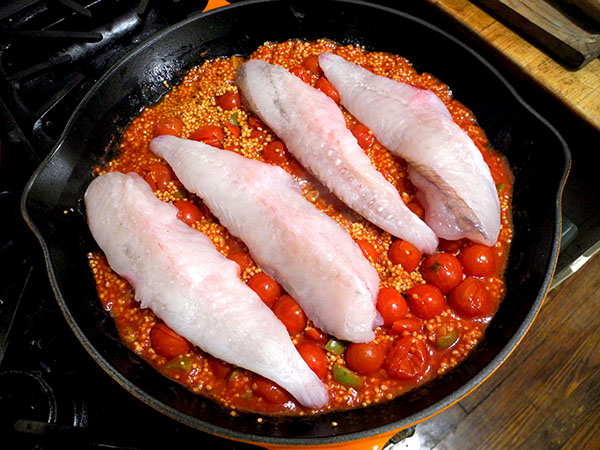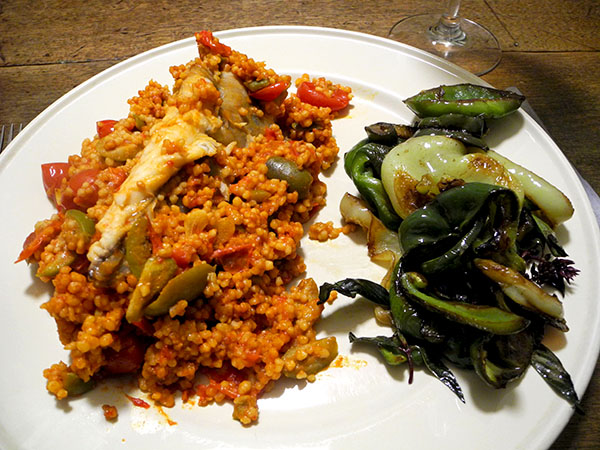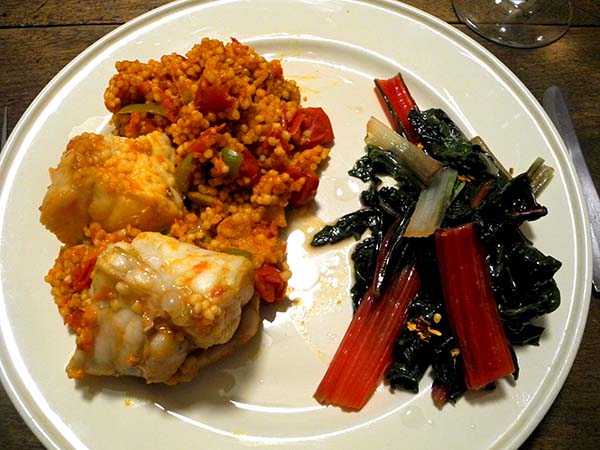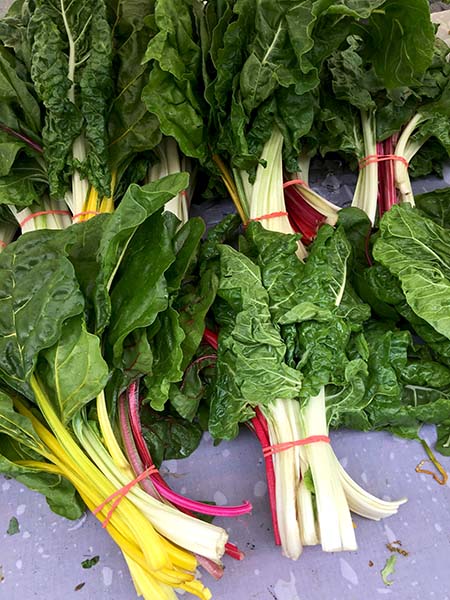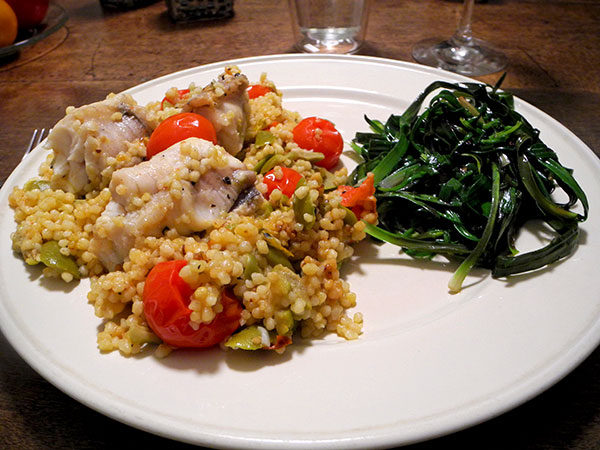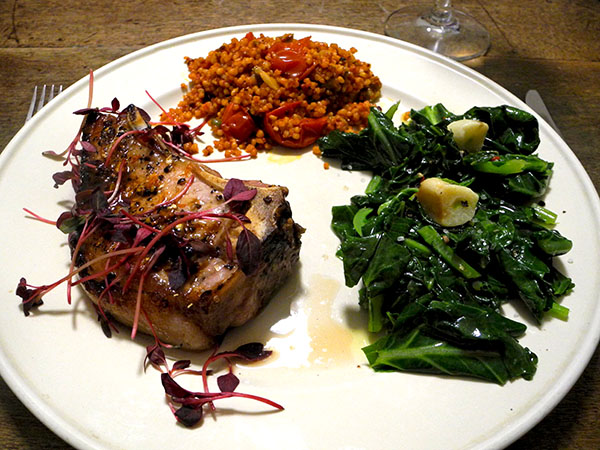
This is one of the easiest meals I get to put together, and I do something like it pretty often. It’s easy because the recipes are simple, because I’ve assembled each of them a number of times, and, it’s even easier this time because one of the 3 things on the plate had been prepared earlier – 5 days earlier in fact, as a part of another meal.
The finish for the pork chops this time might be the most spectacular garnish I’ve ever used, at least on this dish, red amaranth, here, while still at the Greenmarket, looking a bit like a map of the Iberian peninsula.

The green was a very sweet (late winter/early spring?) bunch of very sweet, tender collards.

This is a grainy blowup from the earlier appearance of the inguazato, which at that time included monkfish tails.
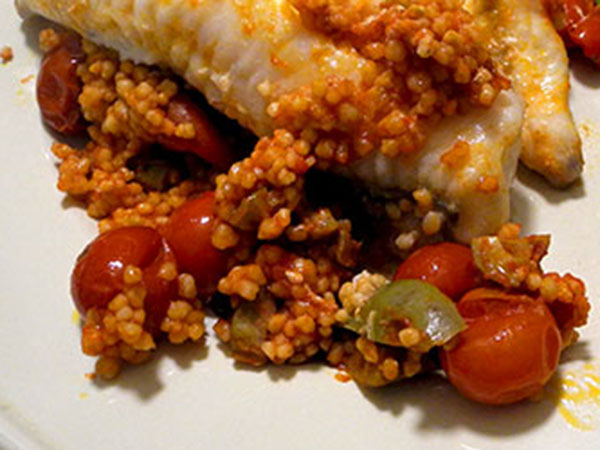
- two small pork chops (8 ounces each) from Flying Pigs Farm, thoroughly dried, seasoned well with salt and freshly-ground pepper, seared quickly on both sides inside a heavy enameled cast-iron pan (a small amount of a dried orange-golden habanada pepper added as each side was sealed), then half of an organic lemon squeezed over the top and left in the pan between the chops, the pan placed in a 425º oven for about 14 minutes (flipped halfway through, at which time the lemon was squeezed over them once again and replaced between them), removed from the oven and arranged on plates, the really luscious scant pan juices spooned over the meat, which was finished with a flourish of red micro amaranth from Windfall Farms
- a serving of a couscous dish, chef David Pasternack’s ‘inguazata’, a precious leftover from this meal [the recipe can be found through a link of that page], enjoyed earlier in the week
- collard greens from Lani’s Farm, torn into small sections (the stems were tender enough to include in the cooking), washed several times and drained, transferred to a smaller bowl very quickly, in order to retain as much of the water clinging to them as possible, wilted inside a heavy oval enameled cast iron pot in which 2 halved garlic cloves from John D. Madura Farm had first been allowed to sweat in a bit of olive oil, a little crushed dried Sardinian pepperoncino from Buon Italia along with them, the greens finished with a little salt, freshly-ground pepper, a bit of sweet local lemon juice from Fantastic Gardens of Long Island, and a drizzle of olive oil
- the wine was a California (Sonoma) white, Jacqueline Bahue Carte Blanche Sauvignon Blanc Sonoma Valley 2016, from Naked Wines
- the music was Marin Marais’ 1789 opera, ‘Sémélé’, Hervé Niquet conducting Le Concert Spirituel
